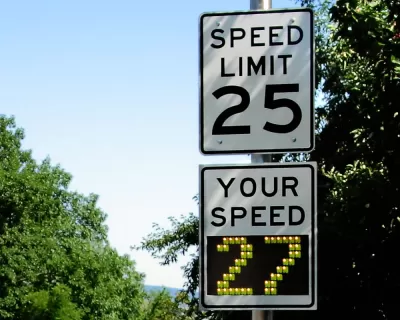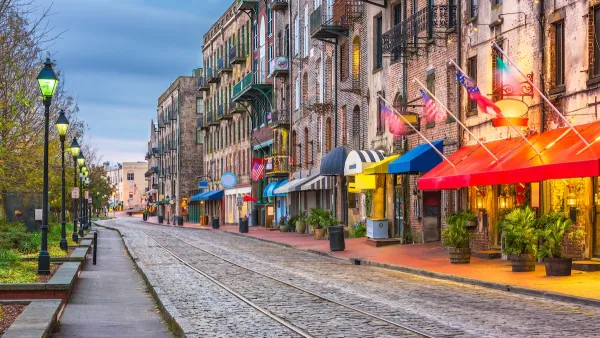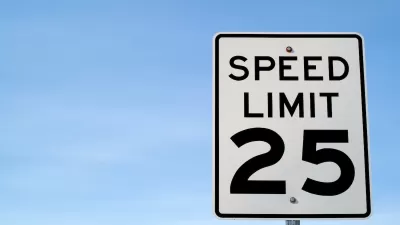Lower speed limits make cities safer, more livable, and, in the long run, more functional.

"The case for a fundamentally slower city has gained traction recently, especially in places where the rise of micromobility, the promise of autonomous vehicles, and the very-much-already-here problem of road congestion have converged, slowing drivers to a furious crawl," writes Andrew Small.
In the past, traffic jams were considered part of urban life, says Small, but drivers began to see speed as a right as cities changed and roads widened. Lately, however, a number of American cities have been moving back to lower speed limits, in response to both safety concerns and the diversifying of the mobility landscape.
"The most obvious immediate benefit to a fundamentally slower city is the safety boost it delivers. Reducing speeds is the best, easiest, and fastest way to quickly radically improve safety, for both drivers and anyone in front of them," says Small.
Technology, and the new modes that it has made possible, is also encouraging slower cities:
The micromobility revolution not only highlights a burgeoning need for more slow lanes: It can vividly illustrate the people-moving power of very modest speeds. When a dude on an electric scooter that rarely goes over 10 mph handily beats a BMW across town at rush hour, it’s easier to see how the scale of cities supports more-but-slower vehicles.
In addition, autonomous vehicles could help usher in a new era of slower-moving city streets. "If we can reconceptualize autonomous vehicles as low-speed machines trundling around downtown rather than interstate-eating robots tasked with making complex split-second driving decisions at highway velocities, everything gets less difficult," notes Small.
FULL STORY: Why Speed Kills Cities

Planetizen Federal Action Tracker
A weekly monitor of how Trump’s orders and actions are impacting planners and planning in America.

San Francisco's School District Spent $105M To Build Affordable Housing for Teachers — And That's Just the Beginning
SFUSD joins a growing list of school districts using their land holdings to address housing affordability challenges faced by their own employees.

The Tiny, Adorable $7,000 Car Turning Japan Onto EVs
The single seat Mibot charges from a regular plug as quickly as an iPad, and is about half the price of an average EV.

Seattle's Plan for Adopting Driverless Cars
Equity, safety, accessibility and affordability are front of mind as the city prepares for robotaxis and other autonomous vehicles.

As Trump Phases Out FEMA, Is It Time to Flee the Floodplains?
With less federal funding available for disaster relief efforts, the need to relocate at-risk communities is more urgent than ever.

With Protected Lanes, 460% More People Commute by Bike
For those needing more ammo, more data proving what we already knew is here.
Urban Design for Planners 1: Software Tools
This six-course series explores essential urban design concepts using open source software and equips planners with the tools they need to participate fully in the urban design process.
Planning for Universal Design
Learn the tools for implementing Universal Design in planning regulations.
Smith Gee Studio
City of Charlotte
City of Camden Redevelopment Agency
City of Astoria
Transportation Research & Education Center (TREC) at Portland State University
US High Speed Rail Association
City of Camden Redevelopment Agency
Municipality of Princeton (NJ)





























